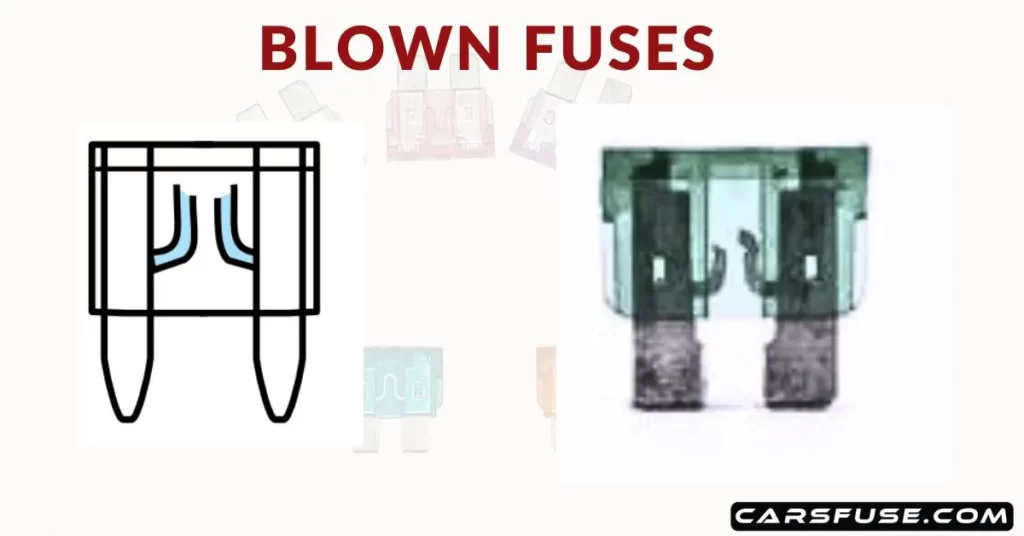Yes, you can replace a car fuse yourself. Replacing a fuse is a relatively simple task that you can do without requiring professional assistance. Never forget that you must replace the blown fuse with one that has the same rating (amperage). By using a fuse with a greater or lower rating, you run the risk of causing electrical issues or potentially harming the electrical system in your automobile. It is advised to seek the advice of a qualified car mechanic if you are unclear of the appropriate fuse to use or if the issue remains after the fuse has been changed.
Table of Contents
For more information on troubleshooting car electrical issues, you can refer to our article "How do I know if my car fuse box is broken?" to gain further insights and guidance on related topics.

How do I change a fuse in my car?
The electrical system of a car is extremely dependent on automobile fuses. Their importance is in protecting delicate components from possible electrical harm. By standing between the electrical source and the exposed areas of the car, these little guardians serve as watchmen. They serve as the first line of defense for the vehicle and its occupants, protecting critical components from electrical fires and assuring overall safety. Additionally, faulty electrical devices can cause excessive strain on the circuit, resulting in a blown fuse as a safety precaution. Here’s a step-by-step guide on how to replace a car fuse:
- Identify the fuse box: The fuse box is usually located either under the dashboard on the driver’s side or in the engine compartment. Consult your car’s manual to find the exact location.
- Locate the blown fuse: Inside the fuse box, you’ll find multiple fuses. Each fuse is labeled with a number or a symbol that corresponds to a specific electrical component in your car. Use the diagram on the fuse box cover or the manual to identify the fuse associated with the malfunctioning component.
- Turn off the ignition: Before replacing the fuse, make sure the car’s ignition is turned off. This is a crucial safety step to prevent any electrical mishaps.
- Remove the blown fuse: Using a fuse puller tool or a pair of needle-nose pliers, carefully grip and pull out the blown fuse. Be gentle and avoid using excessive force to prevent any damage to the fuse box.
- Check the fuse: Examine the blown fuse visually to confirm that the metal strip inside is broken or melted. This indicates that the fuse is faulty and needs to be replaced.
- Install the new fuse: Take a new fuse of the same rating and insert it into the empty slot in the fuse box. Make sure it fits securely and is properly seated.
- Test the electrical component: Once the new fuse is in place, turn on the ignition and test the electrical component associated with that fuse to ensure it’s functioning correctly.
We recommend referring to our comprehensive article titled "What causes car fuses to go bad? " It provides in-depth information on common causes of fuse failures and offers effective solutions. Enhance your understanding of car electrical systems and address fuse-related challenges with confidence.
What tool do you need to change a fuse?
You have the option to remove a blown car fuse either manually or with the assistance of specific tools. To successfully replace a car fuse, it is important to have the following tools at your disposal, each serving a specific purpose:
- Needle-nose pliers or fuse pullers: They provide a secure grip, making the removal process easier and more efficient to safely extract fuses from the fuse box.
- Electrical tester or multimeter: This equipment is for diagnosing electrical problems and enables you to assess whether a fuse is blown or functioning correctly by measuring electrical continuity.
- Flashlight: Its illumination helps locate the fuse box with ease ensuring clear visibility and accessibility to the fuse box.
- Spare fuses: It is recommended to have a variety of spare fuses of different amperages to ensure compatibility with the car’s fuse box, allowing you to quickly replace a blown fuse without having to search for a replacement.
Explore more related to the topics: How many fuse boxes does a car have? Can you drive your car with a blown fuse? What is the fastest way to check a car fuse? Do you need to disconnect battery to change fuse?
So finally answer to your question Can I replace a car fuse by myself? is simply Yes, you can replace a car fuse by yourself. Replacing a fuse is a relatively simple task that does not require specialized skills. By following proper safety precautions and using the appropriate tools, you can confidently replace a blown fuse in your car’s fuse box. Just make sure to consult your car’s owner manual or fuse box diagram to locate the specific fuse and its amperage rating. However, if you are unsure or uncomfortable with the process, it’s always recommended to seek professional assistance.
Tom Smith is a passionate car mechanic and automotive enthusiast, specializing in the intricate world of car fuse boxes. With years of hands-on experience under the hood, he has earned a reputation as a reliable expert in his field. As the founder and content creator of the popular blog website 'carsfuse.com,' Tom has dedicated himself to sharing his extensive knowledge of car fuse boxes and electrical systems with the world.


